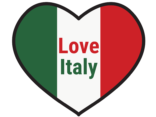Italians greet each other in a warm and friendly manner, often involving physical contact. The most common greeting is a simple “Ciao” (Hello) or “Buongiorno” (Good morning). Handshakes are common in formal situations or with acquaintances, while friends and family often exchange two kisses on the cheek. In more formal settings, titles like “Signore” (Sir) or “Signora” (Madam) may be used. The nature of Italian greetings can vary based on the region, the time of day, and the relationship between the people.
Understanding Cultural Etiquette: How Do Italians Greet Each Other?

Understanding cultural etiquette is a crucial aspect of effective communication, especially when interacting with people from different backgrounds. One such culture rich in unique customs and traditions is Italy. The Italian way of greeting is not just a mere act of saying hello; it is a significant social ritual that reflects the warmth, camaraderie, and close-knit nature of the Italian society.
In Italy, greetings are often characterized by enthusiasm, genuine interest, and physical contact. The most common form of greeting is a handshake, accompanied by direct eye contact and a warm smile. This is a standard form of greeting when meeting someone for the first time. The handshake is firm but not overly so, and it is considered polite to wait until the older or more senior person extends their hand first.
However, as relationships develop, greetings become more personal and tactile. Close friends and family members often greet each other with a hug and a kiss on both cheeks, starting from the left. This form of greeting, known as ‘fare la scarpetta’, is a testament to the affectionate and expressive nature of Italians. It’s important to note that this is not a gender-specific practice; men also greet each other in this manner, especially in the southern parts of Italy.
In addition to these physical gestures, verbal greetings also play a significant role. The most common phrases are ‘Ciao’ (Hello), ‘Buongiorno’ (Good morning), and ‘Buonasera’ (Good evening). The use of these phrases depends on the time of day. ‘Buongiorno’ is used until about 1 pm, ‘Buon pomeriggio’ (Good afternoon) from 1 pm to 5 pm, and ‘Buonasera’ from 5 pm onwards. ‘Buonanotte’ (Good night) is typically used when leaving, not when arriving.
Italians also place a high value on addressing people appropriately. Using formal titles such as ‘Signore’ (Sir) or ‘Signora’ (Madam) is common when addressing someone you don’t know well, or someone older or of higher status. The informal ‘tu’ (you) is reserved for friends, family, and people of the same age, while the formal ‘Lei’ is used in other situations.
Moreover, Italians are known for their conversational nature. Greetings are often followed by a series of questions about one’s health, family, and general well-being. This is not mere small talk; Italians genuinely care about the answers. It’s a way of showing interest and maintaining social connections.
In conclusion, understanding the Italian way of greeting is about more than just knowing the right words or gestures. It’s about understanding the values that underpin Italian society: respect for elders and those in authority, the importance of family and friendships, and a genuine interest in the well-being of others. So, the next time you find yourself in Italy or in the company of Italians, remember these cultural nuances. They will not only help you communicate effectively but also deepen your appreciation of the rich and vibrant Italian culture.
Conclusion
Italians typically greet each other with a warm, friendly demeanor, often involving physical contact. This can include a handshake, a hug, or a kiss on both cheeks, depending on the level of familiarity. They also use common greetings such as “Ciao” for hello and goodbye, “Buongiorno” for good morning, and “Buonasera” for good evening.
Secure Your Dream Italian Experience Before It’s Gone!
Planning a trip to Italy? Don’t let sold-out tours or overcrowded attractions spoil your adventure. Unmissable experiences like exploring the Colosseum, gliding through Venice on a gondola, or marvelling at the Sistine Chapel often book up fast—especially during peak travel seasons.

Booking in advance guarantees your place and ensures you can fully immerse yourself in the rich culture and breathtaking scenery without stress or disappointment. You’ll also free up time to explore Italy's hidden gems and savour those authentic moments that make your trip truly special.
Make the most of your journey—start planning today and secure those must-do experiences before they’re gone!
